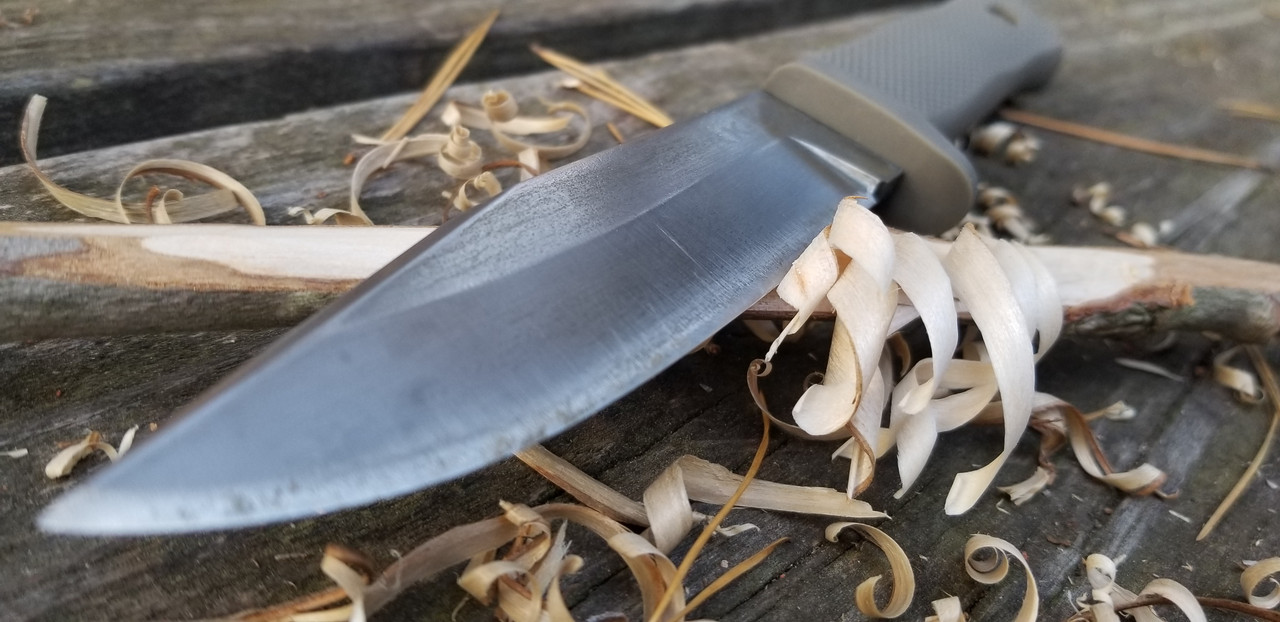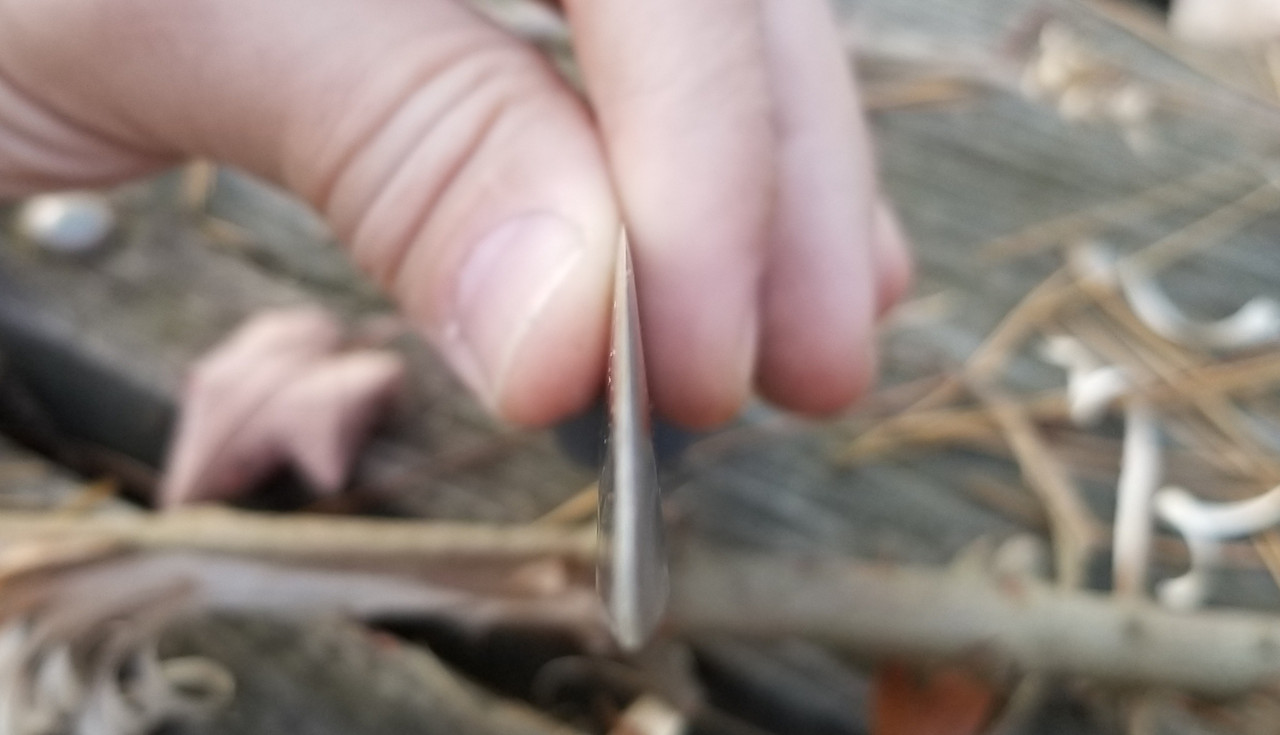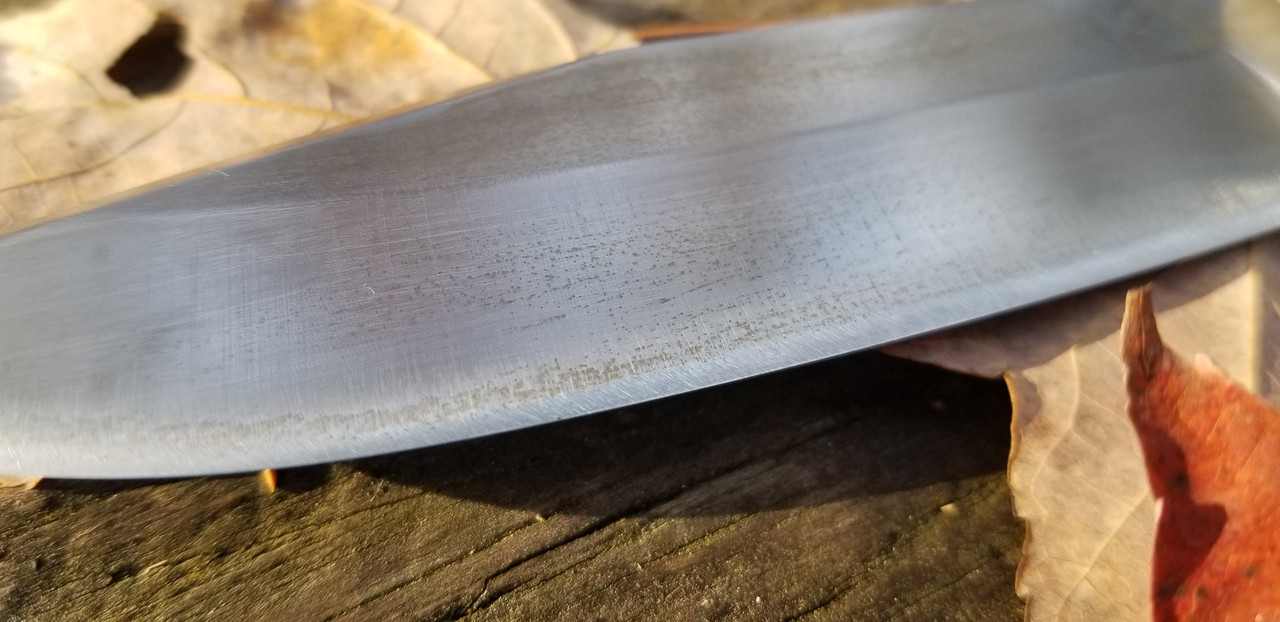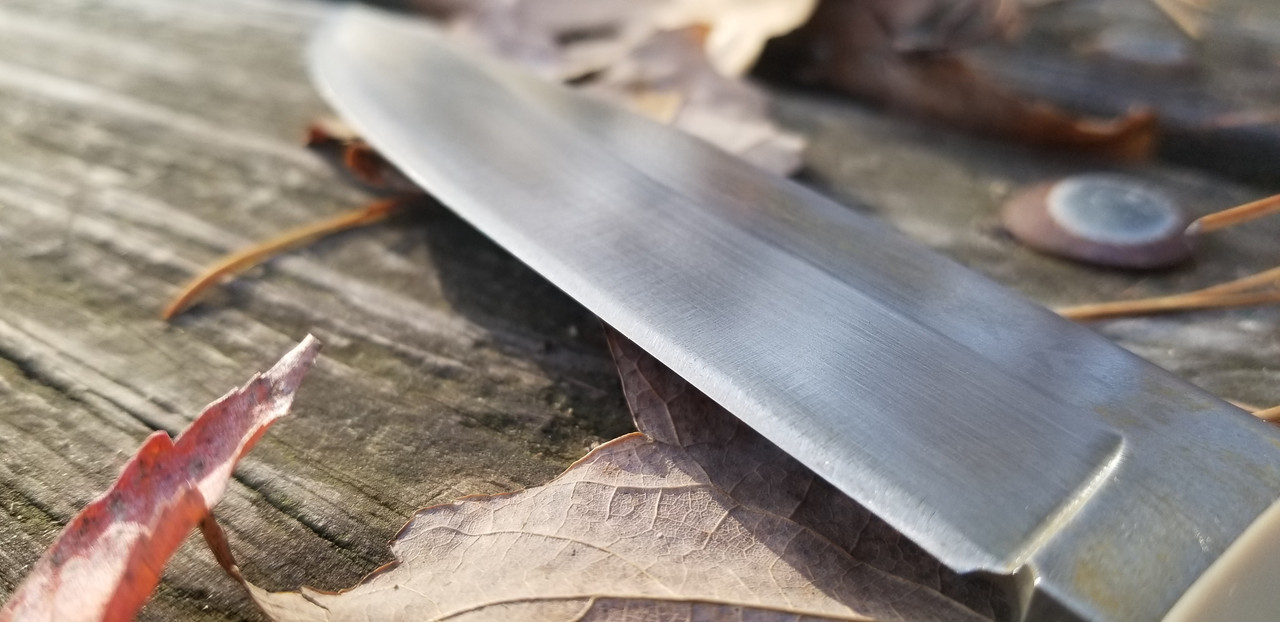Since my wife is away this weekend, I've decided to touch up my favourite users on Venev stones. I particularly enjoyed the feedback of F150, F240 and F400.
Thanks to Vivis teachings Manix2lw REX45 got 15dps F240 finish. Its the 3rd time I'm rocking low grit finish and absolutely love it.
My K390 Endela recently dropped on the concrete floor and needed some mild tip repair, I couldn't resist and polished it to F400, also at 15dps.
San Mai kitchen knife was first polished to F1200, but I didn't like the lack of bite and brought it down to F800 which yielded really nice 20dps edge.
Thanks for the advice on lapping Venev F100 with 90grit SiC powder in the off topic part of the forum, it really brought it back to life!
Lastly I rolled the edge on Sage5lw in S30V, progression used on the blade: F150, F240, F400, F800, F1200 and finally white part of Spyderco's double stuff to make it nice and shiny at 15dps. Its plenty sharp, but my least favourite EDC steel, since its loosing the front end sharpness very fast, soon to be replaced by newly dropped Maxamet steel I think

Overall great evening listening to the records and crisping up the edges. Sharpening journal topic on this forum gives me so much pleasure. Can't wait to dull my knives agan and learn new stuff on here. Thanks for keeping this discussion so engaging and interesting, I've learned so much!




















